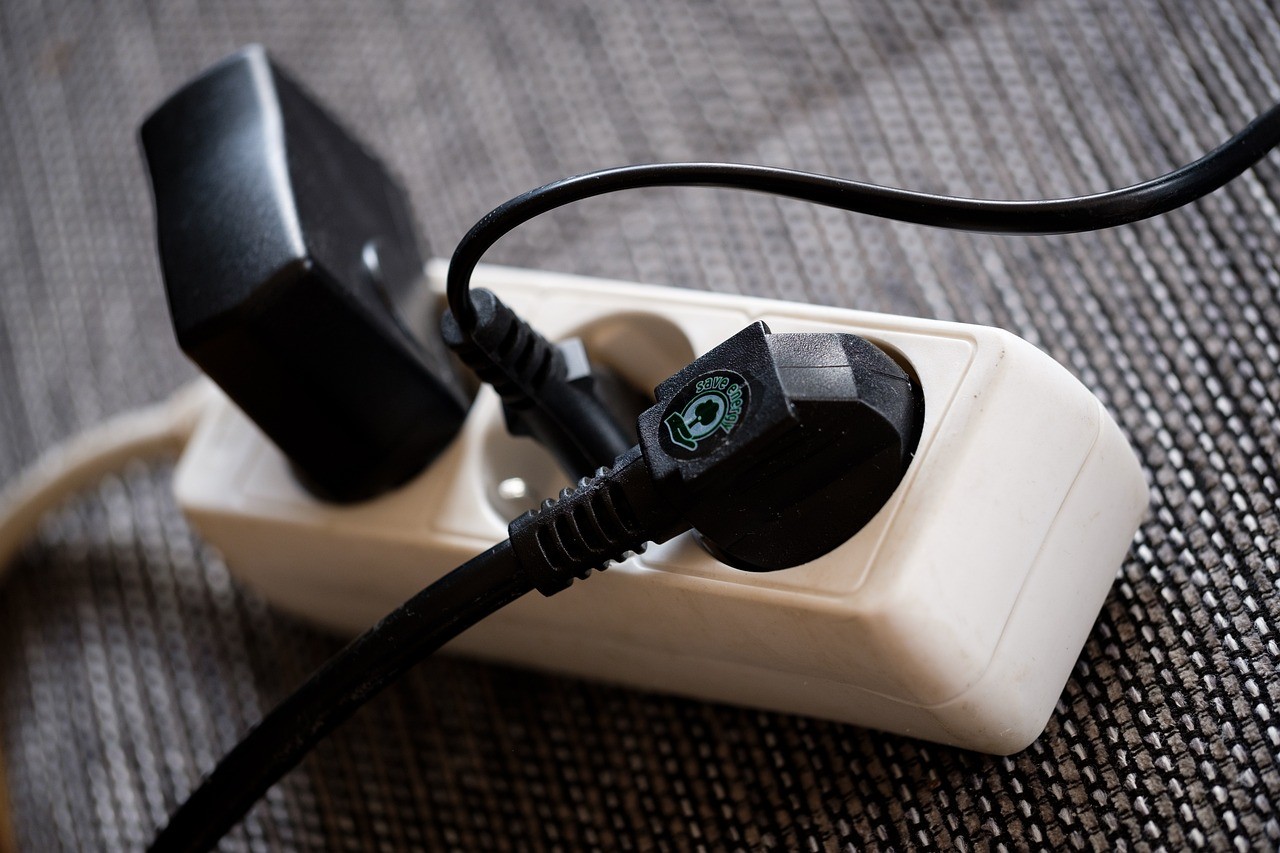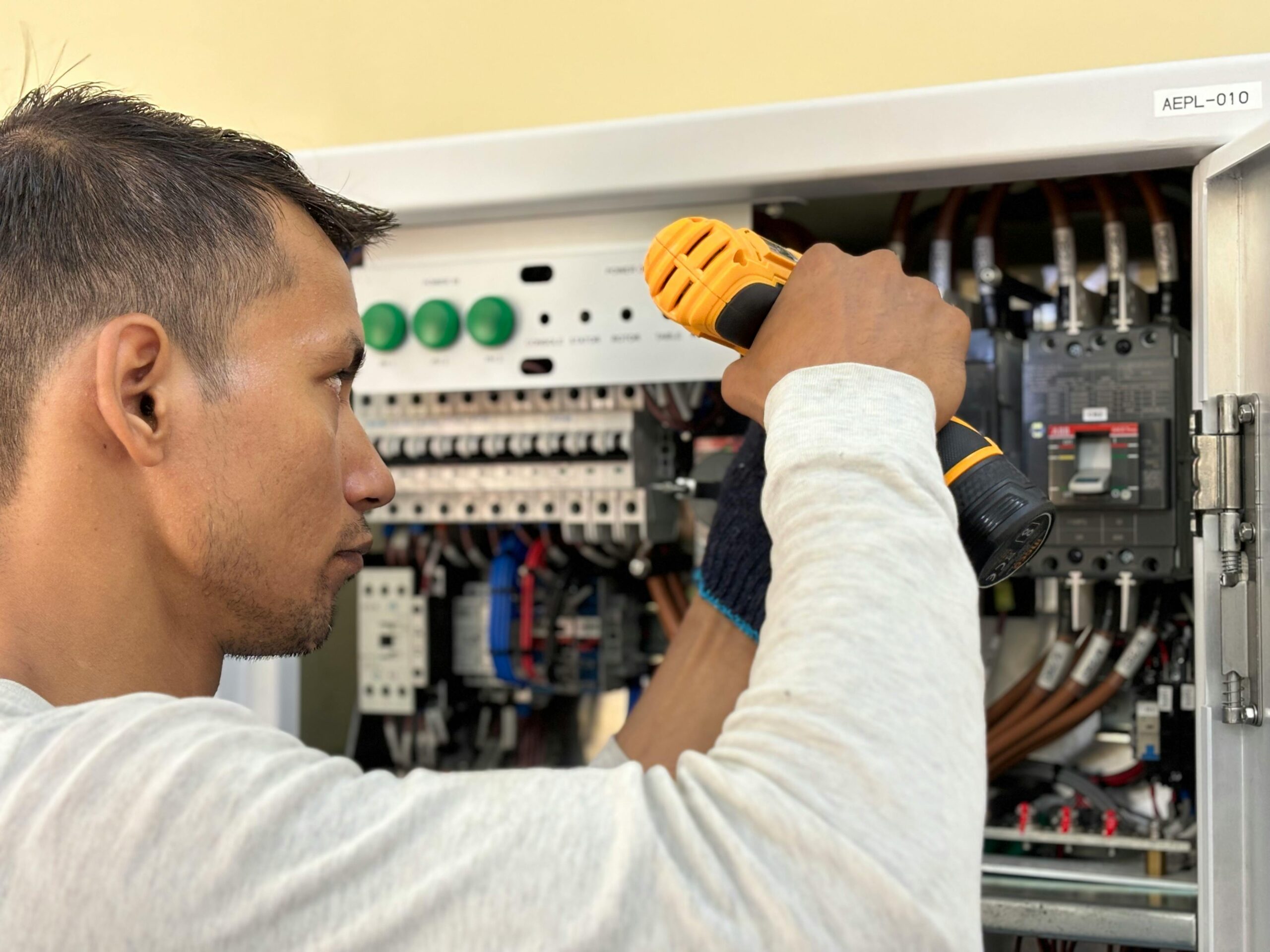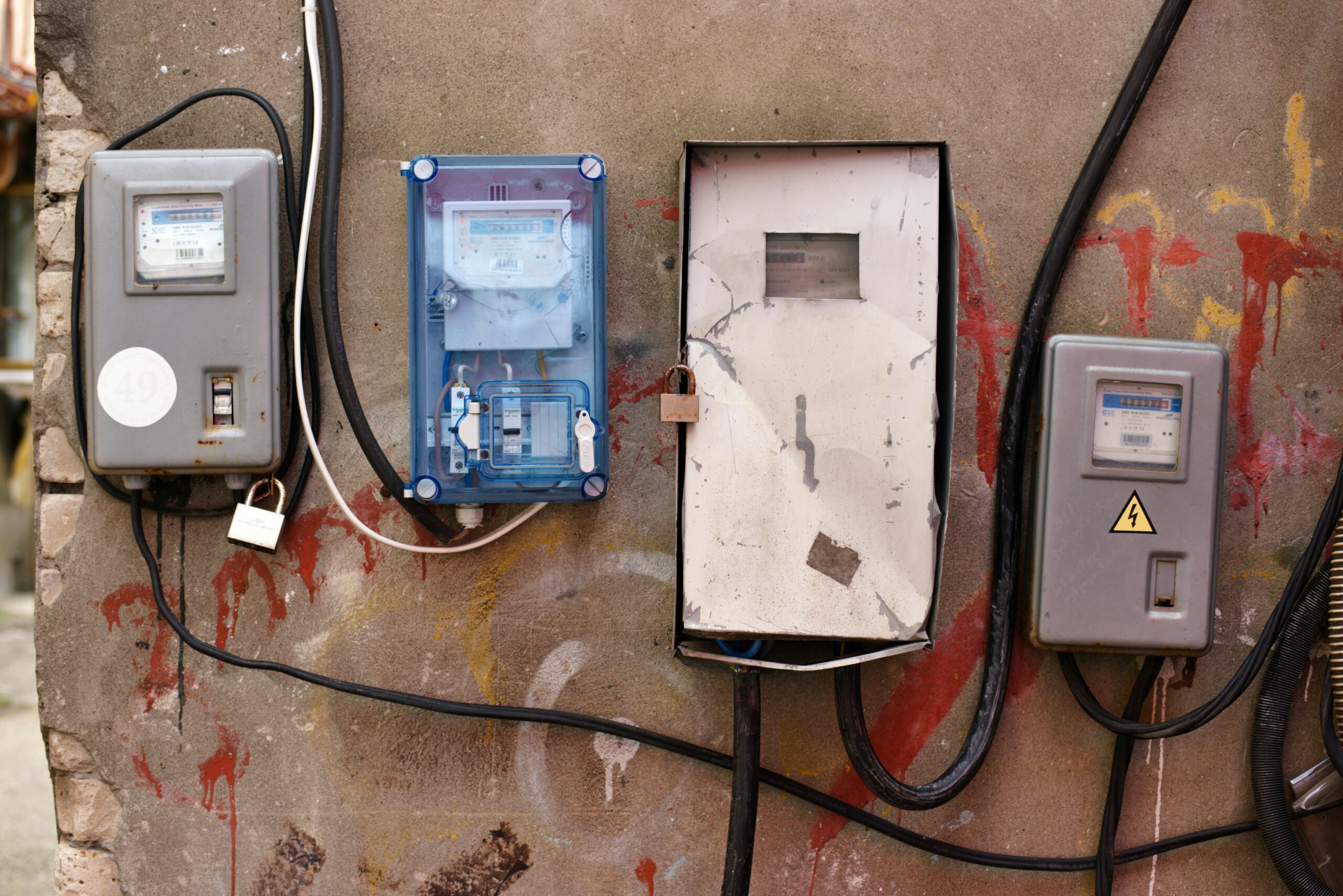Surge protectors are devices designed to shield electronics and electrical appliances from voltage spikes. They work by channeling the excess electrical voltage into the grounding wire, thereby preventing it from flowing through the electronic devices plugged into them.
This protection is crucial for preserving the lifespan and functionality of sensitive electronics, as excessive voltage can cause significant damage or even total loss of the device.
Lightning strikes are among nature’s most powerful and awe-inspiring phenomena, capable of generating temperatures hotter than the surface of the sun and voltages reaching up to 300 million Volts. The mystique of lightning strikes lies not only in their immense power but also in their unpredictability and the rapid speed at which they occur.
Despite advances in technology and understanding of weather patterns, predicting the exact time and location of a lightning strike remains a significant challenge, contributing to the enduring fascination and respect for this natural event.
How Surge Protectors Work
Surge protectors are essential devices that protect electronic equipment from voltage spikes, ensuring their longevity and optimal performance. Their operation hinges on two core principles:
Voltage Diversion Explained
The primary function of a surge protector is to detect excessive electrical voltage and divert it safely to the grounding wire, thus preventing it from reaching the connected devices. This process, known as voltage diversion, is swift and efficient, occurring in milliseconds.
During a voltage spike, the surge protector effectively acts as a gatekeeper, ensuring that only the standard electrical current passes through to the devices, while any excess is rerouted away harmlessly.
Key Components in Surge Protectors
The heart of a surge protector’s functionality lies in its key components:
Metal Oxide Varistor (MOV)
This is the most crucial component. The MOV connects the power line and the ground line within the surge protector. It remains inactive under normal voltage conditions.
However, when a voltage spike occurs, the MOV becomes highly conductive, allowing the excess voltage to be diverted to the ground, thereby protecting the connected equipment.
Gas Discharge Arrestor (GDA)
For higher voltage spikes, the GDA comes into play. It works alongside the MOV by conducting the excess voltage to the ground when it surpasses a certain threshold, providing an additional layer of protection.
Thermal Fuse
This safety feature prevents the surge protector itself from catching fire in case of a massive voltage spike or sustained over-voltage conditions by cutting off the power supply.
Together, these components work in harmony to protect electronic devices from the potentially damaging effects of voltage spikes, including those caused by lightning, though it’s important to note that no surge protector can offer 100% protection against a direct lightning strike.
Lightning’s Lethal Power
Lightning surges are sudden and intense increases in electrical power caused by lightning strikes. When lightning strikes a building, tree, or other object, the electrical charge it carries – which can exceed 30,000 amps – seeks the path of least resistance to the ground.
This can result in a surge of electricity traveling through wiring, plumbing, and any metal wires or bars in concrete walls or flooring. The destructive power of a lightning surge can damage electrical systems, ignite fires, and even cause injury or death to individuals in contact with these conducting pathways.
Understanding the nature of lightning surges is vital in taking the appropriate measures to mitigate their potentially lethal effects.
One of the most common misconceptions is that surge protectors can fully safeguard electronics and appliances against lightning strikes. While surge protectors can offer a degree of protection against voltage spikes, they are not infallible shields against the colossal force of a direct lightning strike.
Another widespread belief is that lightning only strikes the highest point. In reality, lightning can strike anywhere, guided by the intricate patterns of electrical charges in the atmosphere. Acknowledging these facts is crucial in preparing for and responding to the unpredictable nature of lightning and its associated electrical surges.
The Clash: Surge Protectors vs. Lightning
Surge protectors, designed to shield electronic devices from sudden spikes in voltage, play a pivotal role in our daily reliance on technology. However, their effectiveness against lightning strikes—a common misconception among many users—reveals significant limitations. Lightning’s formidable power, often exceeding millions of volts, can easily overwhelm the protective capabilities of standard surge protectors.
These devices are tailored for minor fluctuations and surges, not the devastating force of a direct or nearby lightning storm. The difference in scale between what surge protectors are designed to handle and the enormous energy from lightning means that relying solely on them for protection during a storm is perilously optimistic.
Choosing the Right Surge Protector
Power Strip vs. Whole-House Protection
When selecting a surge protector, it’s crucial to understand the difference between a power strip and whole-house surge protection. A power strip with surge protection merely protects the devices plugged into it, offering a convenient, portable solution for safeguarding specific electronics like computers and TVs.
On the other hand, a whole-home surge protector is installed at your home’s electrical panel, providing a first line of defense against surges that could impact all electrical devices.
Whole-house surge protectors require professional installation but offer comprehensive protection that extends beyond what a power strip can provide.
Factors Influencing Effectiveness
The effectiveness of a surge protector is influenced by several key factors:
Joule Rating
This measures the energy a surge protector can absorb. A higher joule rating indicates better protection.
Response Time
The quicker a surge protector can react, the better. Look for protectors with a response time of one nanosecond or less.
UL Rating
Ensure the product is certified by Underwriters Laboratories (UL) and specifically mentions surge protection.
Clamping Voltage
This represents the voltage level at which the surge protector starts to block or divert excess electricity. Lower clamping voltage indicates better protection.
Choosing the right surge protector involves balancing the level of protection needed with the specific requirements of your home and devices. Whether opting for a power strip for targeted protection or a whole-house system for broader security, understanding these factors can guide you in making an informed decision.
Lightning Rods: An Ally or Alternative?
Lightning rods, also known as lightning conductors, are metal rods mounted on buildings designed to protect structures from lightning strikes. The fundamental principle behind their operation lies in providing a preferential path for the lightning charge to travel safely to the ground.
This is achieved through the lightning rod’s connection to a grounding system, which dissipates the electrical charge into the earth, sparing the building from damage. With their design, lightning rods aim to intercept potential strikes, mitigating the risk of fire or structural harm caused by the intense energy of a lightning bolt.
While lightning protection systems offer a direct defense against lightning strikes, integrating them with surge protectors provides a comprehensive protection system for both the structure and the electrical devices within.
Surge protectors guard against a power surge in power lines, which can occur as indirect effects of lightning strikes or other sources of electrical disturbance. When a lightning rod successfully diverts a lightning strike to the ground, the electrical energy can still induce currents in nearby power lines. These induced currents can lead to voltage surges.
When you combine lightning rods with high-quality surge protectors, you can safeguard not only the structural integrity of the building but also the electronic devices inside, which might be sensitive to even minor fluctuations in power supply. This dual approach ensures a robust defense against the varied electrical threats posed by lightning.
Evaluating Surge Protector Quality
When considering the effectiveness of surge protectors against lightning-induced surges, understanding and evaluating their quality is crucial.
The quality and reliability of surge protectors are significantly influenced by various industry standards and certifications. These benchmarks ensure that devices provide a certain level of protection in case of a surge.
For instance, UL (Underwriters Laboratories) 1449 rating is a critical standard for surge protectors, offering a clear indication of their effectiveness in surge protection. Products meeting these standards have been tested rigorously for performance under surge conditions and are more likely to offer adequate protection.
On the other hand, the market is also populated with subpar surge protectors that claim to offer comprehensive protection but fall short when put to the test. Identifying these products can be challenging but is vital to ensure your electronic devices and property are adequately protected.
Some red flags include a lack of proper certifications, unusually low prices that seem too good to be true, and an absence of warranty or customer support services. Additionally, products that don’t specify their energy absorption rating or clamping voltage — two critical parameters in surge protection — should be approached with caution.
Beyond Electronics: Surge Protectors for Homes
While the primary function of surge protectors is often associated with the safeguarding of electronic devices, their role extends significantly further, especially when it comes to the comprehensive protection of homes.
Surge protectors play a crucial role in shielding household appliances from the potentially devastating effects of power surges. Whether it’s a lightning strike or a sudden return of power after an outage, these surges can irreparably damage appliances such as refrigerators, ovens, washing machines, and HVAC systems.
Since they act as a buffer, surge protectors absorb and divert excess voltage, thus ensuring that only the necessary amount reaches your appliances. This preventative measure not only extends the lifespan of these appliances but also saves homeowners from the significant financial burden of replacements or repairs.
Beyond protecting electronics and appliances, surge protectors are pivotal in enhancing home safety during storms. Electrical surges can overheat electrical wiring and connected devices, posing a serious fire risk.
Given that storms can bring about frequent lightning strikes which in turn can cause sudden power surges, having a surge protector installed acts as a critical safety layer. It minimizes the risk of fire by managing unexpected increases in electrical pressure, ensuring the safety of the occupants and the structure itself during volatile weather conditions.
Summary: Navigating the Storm
Our exploration into whether surge protectors can defend against lightning strikes has unveiled several critical insights.
Firstly, we established that surge protectors offer effective protection against voltage spikes within a home’s electrical system, primarily those caused by the electronic devices themselves or external fluctuations in power supply.
However, in the context of lightning—a natural phenomenon that can generate electrical surges far beyond the capability of most commercially available surge protectors—it’s clear that these devices have limitations.
While they can mitigate damage to some extent, the extraordinary voltage generated by a lightning strike can overwhelm most surge protectors, leading to potential property damage or even fire.
Given these findings, it’s imperative for homeowners to adopt a multifaceted approach to safeguard their homes from lightning strikes.
This includes installing a whole-house surge protector, for example. These devices, installed at your electrical panel, provide a first line of defense against surges, including those from lightning, by redirecting excess energy to the ground.
For additional protection, utilize secondary surge protectors for sensitive electronics. While not foolproof against lightning, they offer an extra layer of defense.
Additionally, when aware of an impending storm, the simplest and most effective strategy to protect your electronics is to unplug them entirely.
Finally, for comprehensive protection against lightning, consider installing a lightning protection system that safely directs the lightning charge away from your home.
When you combine these strategies, you can significantly improve your defense against the potential damages caused by lightning strikes, ensuring both your property and electronics are better protected.
We help companies refine their messaging, hone in their sales process, and grow their pipeline – all with a new website.




